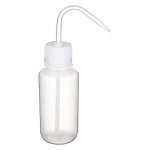Hi there, I'm hoping someone can point me in the right direction.
I have a mercruiser 357 4A repower, with less than 100 hours on it. Carbureted.
Generally it is pretty reliable if I run it every week or every other week.
However if it sits 3 weeks without being started it has a really hard time starting and then runs pretty rough until fully warmed up. This morning it didnt even want to idle until it was fully warmed up.
Once its warmed up fully it seems fine. It might have the mildest miss at idle , but it might be my imagination.
If I start it every week it doesnt have this issue at all.
Anyway i was just wondering if this is normal, or if not any idea what i should look at? I'm thinking plugs, but like i say it's pretty new.
I'm in Florida so I dont winterize because I use it year round, but this time of year we do slow down a bit.
Thanks for the help
I have a mercruiser 357 4A repower, with less than 100 hours on it. Carbureted.
Generally it is pretty reliable if I run it every week or every other week.
However if it sits 3 weeks without being started it has a really hard time starting and then runs pretty rough until fully warmed up. This morning it didnt even want to idle until it was fully warmed up.
Once its warmed up fully it seems fine. It might have the mildest miss at idle , but it might be my imagination.
If I start it every week it doesnt have this issue at all.
Anyway i was just wondering if this is normal, or if not any idea what i should look at? I'm thinking plugs, but like i say it's pretty new.
I'm in Florida so I dont winterize because I use it year round, but this time of year we do slow down a bit.
Thanks for the help


